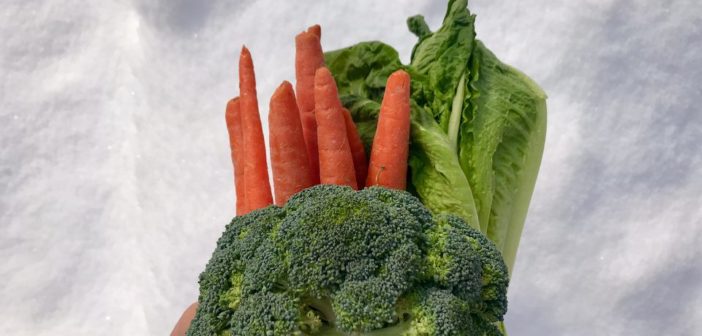Just because North Central’s garden isn’t thriving doesn’t mean you can’t find local produce. Hearty local vegetables picked in the fall can last for months in local farm storage so farmers can sell them all winter long. From beets to winter squash, there are plenty of local produce options at your grocery store.
Beets
This sweet and earthy vegetable lasts in storage long after its growing season of May to October. Beets taste great roasted with a little bit of olive oil and salt. If you want to get fancy, beets make a great base for pesto. Beets are delicious, and they pack a nutritional punch, with high levels of vitamin C, iron, magnesium, potassium and fiber.
Cabbage
Cabbages can be found in grocery stores through March even though their growing season is June to November. They taste great in raw dishes like Asian-chopped salad and cooked dishes like soup and stir-fry. Cabbage is also a low-calorie source of thiamin, calcium, iron, magnesium, phosphorus and potassium, and an excellent source of fiber, vitamin C, vitamin K, vitamin B6, folate and manganese.
Carrots
You know ‘em, and you love ‘em. Carrots are available in grocery stores through the winter but are an old standby grown from May to November. They taste great raw, or you could roast them with a touch of maple syrup, salt and olive oil. Carrots are also super nutritious, with vitamin C, vitamin B6, folate, iron, potassium and copper, and high levels of fiber, vitamin A, vitamin K and manganese.
Kale
This superfood is hearty enough to be grown through December in mild winters and can even last into January. Although its taste gets a bad wrap, raw kale can be delicious if you massage the veggie to wilt it. This makes it a bit less chewy. Alternatively, kale makes a delicious addition to soups and stews. This leafy green boasts high fiber, protein, thiamin, riboflavin, folate, iron, magnesium, phosphorus, vitamin A, vitamin C, vitamin K, vitamin B6, calcium, potassium, copper and manganese.
Onions
Onions’ primetime is August to October, but these flavorful veggies can last in farm storage year-round. They are a great partner to burgers, eggs, salads and more, but they also taste great on their own. Just roast them with olive oil, salt and hearty herbs and dig in. Onions are also nutritious, being a good source of fiber, vitamin B6, folate, potassium and manganese, and a very good source of vitamin C.
Parsnips
Often overlooked, this cousin to the carrot can be locally sourced from farm storage past its harvest in November. Parsnips taste sweet like carrots but have cinnamon and earthy flavors that taste delicious cooked in stews or roasted with salt and olive oil. These unique veggies are also a good source of potassium, and a very good source of fiber, vitamin C, vitamin K, folate and manganese.
Potatoes and Sweet Potatoes
These classic comfort veggies last for months after their spring and summer growing season. Baked, roasted, mashed, Hasselback … anything goes with potatoes. If you want to be trendy, you can even turn your sweet potatoes into toast. Sweet potatoes and white potatoes are nutritious choices, both having high levels of vitamin B6, potassium and manganese. Sweet potatoes have more vitamin A and slightly more fiber, while russet potatoes have more vitamin C.
Winter Squash
Winter squash, like acorn, butternut and spaghetti, are grown and harvested in the fall but can last all winter. This vegetable family can be prepared in many ways, like roasted acorn squash salad, butternut squash soup or spaghetti squash alfredo. Acorn squash and butternut squash are good sources of vitamin A, fiber and manganese, while spaghetti squash is a good source of vitamin C, vitamin B6 and niacin.

